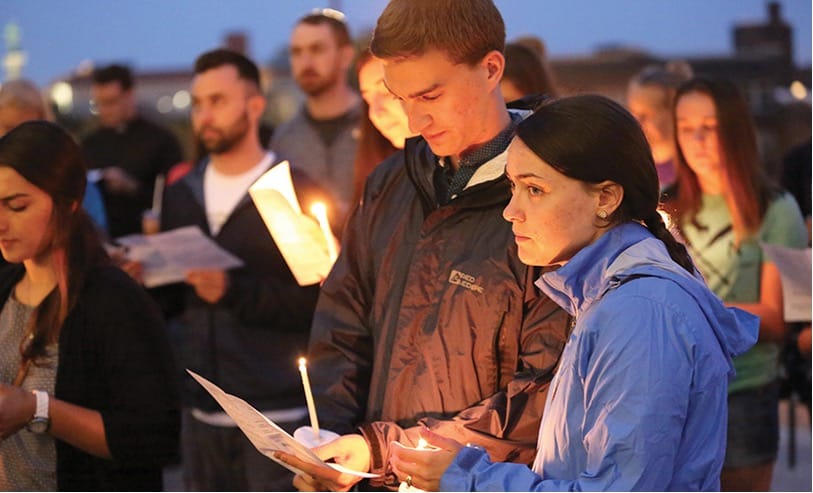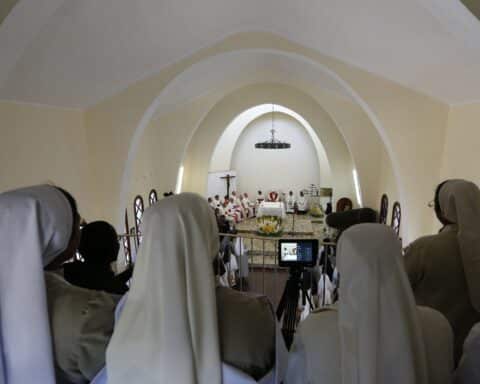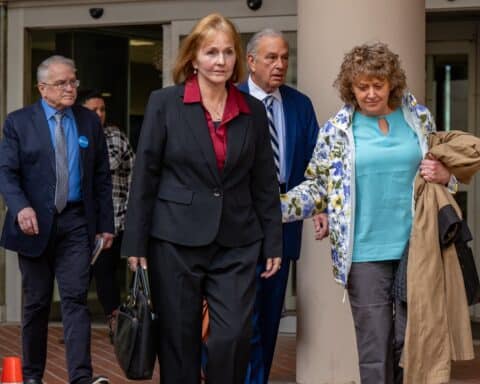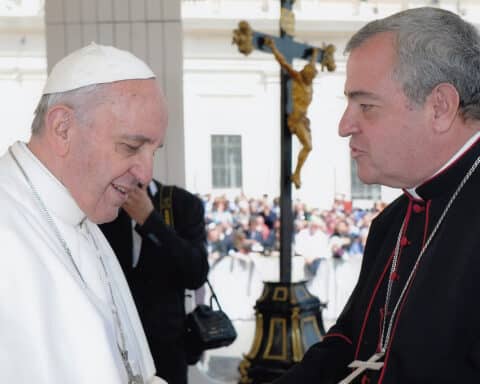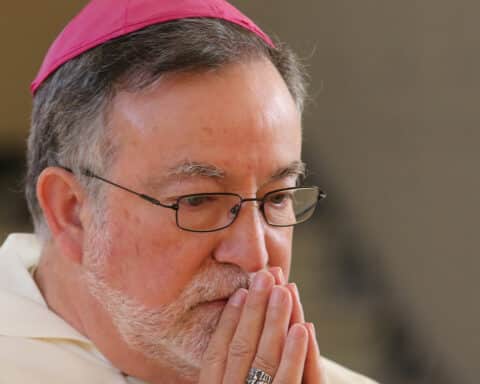When future historians write their histories of U.S. Catholicism, some may give Gilbert Gauthe a paragraph all to himself. Not for anything honorable that he did, but for something supremely dishonorable: He, as much as anyone, transformed sexual abuse of a minor by a Catholic priest from a personal disgrace into a national scandal.
The story of this scandal is disturbing and complex. Even as the number of new cases has apparently dropped, bishops have found themselves struggling to cope with the consequences of earlier offenses that were covered up.
Now even Pope Francis stands accused of not responding quickly enough, and Germany and Chile have joined the ranks of countries where the Church has abuse scandals on its hands.
What follows is an overview of the history of this scandal in the United States, for the benefit of people trying to make sense of it all. It’s a perspective the bishops themselves will need as they gather in Baltimore the second full week of November for their fall general meeting. This issue is expected to dominate the agenda.
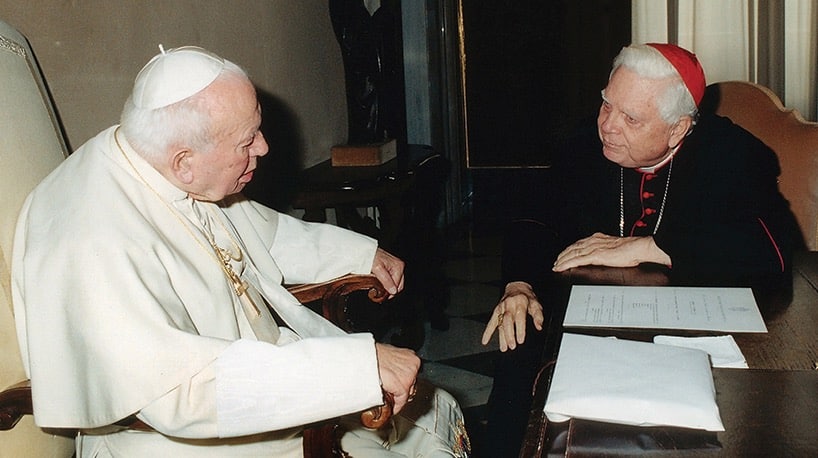
A 1980s ‘aberration’
Start with Gilbert Gauthe. Although by no means the first abuser priest, he was the first to receive national attention as the specifics of his misdeeds and the bungling of his superiors became known.
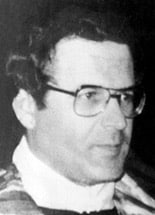
In 1984 a grand jury indicted Gauthe — a priest of the Diocese of Lafayette, Louisiana — for a long list of sex crimes against children. He was tried, convicted and sent to jail, while the diocese paid out $20 million in settlements to his victims. Later he moved to Texas, where he did more jail time for abuse. Altogether, he is said to have molested some 100 children.
Gauthe, it soon developed, was far from alone. Researchers from the John Jay College of Criminal Justice have since concluded that, from 1950-2002, accusations of abusing minors were directed against 4,392 U.S. priests — 4 percent of the total number of priests during that time — with 10,667 people claiming victimization.
1990s response
Few Catholics anticipated any of this when the Gauthe case was making headlines 30 years ago. Most supposed Gauthe and the handful of other priests then known to be abusers were an isolated phenomenon, not a widespread problem.
But some people knew better. In 1985, abuse was on the bishops’ agenda at their spring general meeting. In that year, too, all diocesan bishops received a confidential report by three people: the director of a treatment facility for troubled priests and religious; a staff member at the Vatican’s embassy in Washington, D.C.; and the attorney who represented Gauthe. They told the bishops that the problem was serious and could be enormously costly to the Church.
In the next few years some dioceses adopted new, stronger personnel policies and training programs with an eye to preventing abuse. The National Conference of Catholic Bishops (as it was then called) distributed suggested guidelines. Meanwhile, the number of complaints and lawsuits was rising, although allegations often concerned events in the past.
After a daylong closed-door discussion at the bishops’ general meeting in June 1992, Conference president Archbishop Daniel E. Pilarczyk of Cincinnati issued a statement setting out five recommended steps for bishops.
The five steps became the backbone of official Church response to the problem of clergy sexual abuse during the decade that followed. They were: Respond promptly to allegations of abuse; if evidence supports an allegation, remove the offender and provide him with appropriate treatment; report incidents as required by civil law and cooperate with the authorities; reach out to victims and their families; and be as transparent as possible about what happened.
Some dioceses followed this advice. Some — disastrously, as events would show — did not.
At their November 1992 meeting, the bishops resumed discussion of abuse. Several met with adult survivors of abuse, and the bishops’ Committee on Priestly Life and Ministry established a subcommittee on sex abuse, later succeeded by a full-fledged ad hoc committee.
In 1993, a delegation of U.S. bishops met with Vatican officials to discuss the problem, and Pope St. John Paul II issued a letter condemning abuse. At their general meeting in November, the bishops petitioned the Vatican for changes in Church law to make it easier to laicize priests guilty of abusing minors. The pope responded with new regulations for the United States, which were to be good for five years.
The regulations — later extended for 10 years and made applicable to the Church everywhere — loosened the statute of limitations for Church trials and increased the penalties for offending clergy. Jurisdiction in these cases was assigned to the Vatican’s Congregation for the Doctrine of the Faith. In the next several years, dioceses continued tightening up their procedures.
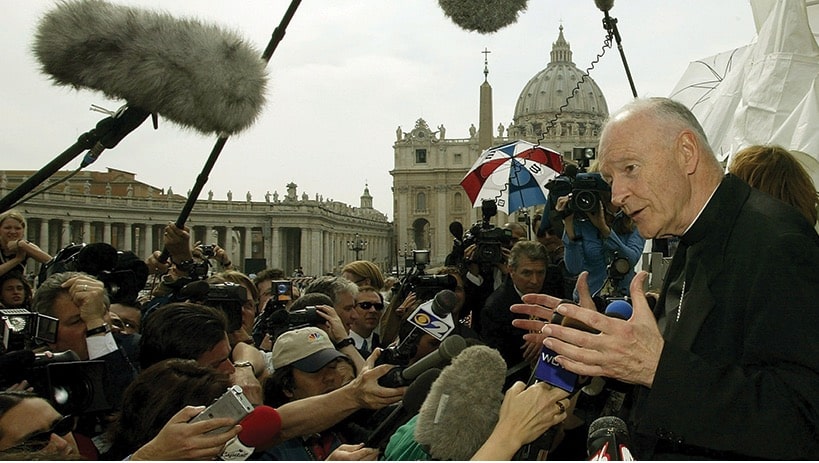
Glaring ‘Spotlight’
And then came the watershed year, 2002. In January the Boston Globe began publishing investigative reports exposing serious mishandling and coverup of abuse by priests in the Boston archdiocese. The stories depicted an ecclesiastical establishment more concerned about shielding abusive clergy and protecting the good name of the Church than helping young victims and their families.
As if to underline the point, mid-January brought the conviction for child abuse of a Boston priest named John Geoghan, who was said to have abused at least 130 minors. Convicted and given a sentence of 9-10 years, he was murdered less than a year later by a fellow inmate in a Massachusetts maximum security prison.
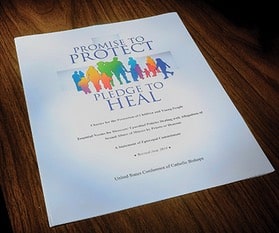
In April, the U.S. cardinals were summoned to Rome for a meeting with John Paul II. The pope declared that there is no place in priestly ministry or religious life for anyone who harms young people. The Vatican authorized the bishops to draw up new special legislation for dioceses.
Meeting in Dallas in June of 2002, amid mounting furor, the bishops adopted the Charter for the Protection of Children and Young People and accompanying norms translating the charter’s principles into law that dioceses were required to follow. The chief feature of these norms — approved by Pope John Paul II the following year for the Church in the United States — is a policy of “zero tolerance” for clergy and religious who are found guilty of sexually abusing minors. But the new penal provisions did not cover offenses by bishops — an omission the bishops only now are moving to correct in the wake of the McCarrick scandal.
Meanwhile, with the help of court orders that forced the release of Church records, other news media in other places had begun to publish their own exposés painting the same picture of clergy abuse and official coverup in dioceses all over the country. The Boston Globe won a Pulitzer Prize for its series. Cardinal Bernard Law resigned as archbishop of Boston and moved to Rome, where he was placed in charge of one of the major basilicas.
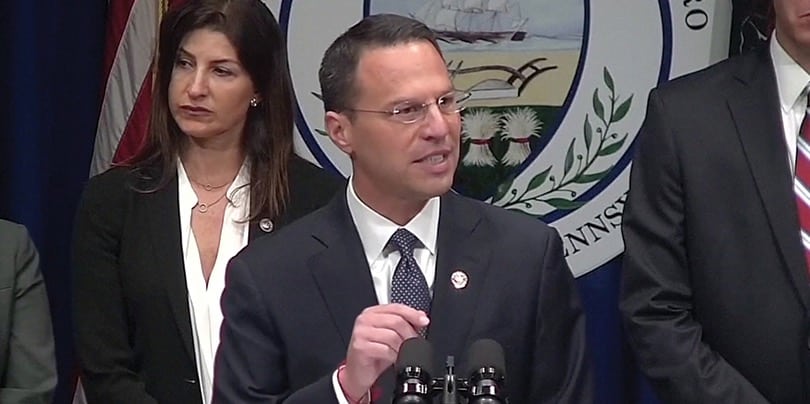
Getting at the roots
At the Dallas meeting in 2002, the bishops also established a National Review Board to oversee diocesan compliance with the new charter and norms. They also created an office for child and youth protection as part of the structure of the U.S. Conference of Catholic Bishops and commissioned studies on the scope and causes of abuse, as well as an independent annual audit of dioceses to assess their compliance with the Charter. The results of the first annual audit were released in January 2006, as have been the results of other audits since then.
The studies were carried out by the John Jay College of Criminal Justice of the City University of New York. The findings were reported in two publications issued by the USCCB: “The Nature and Scope of Sexual Abuse of Minors by Catholic Priests and Deacons in the United States, 1950-2002” (2004) and “The Causes and Context of Sexual Abuse of Minors by Catholic Priests in the United States, 1950-2010” (2011). Together, they provide the most comprehensive examination of this problem to be published to date.
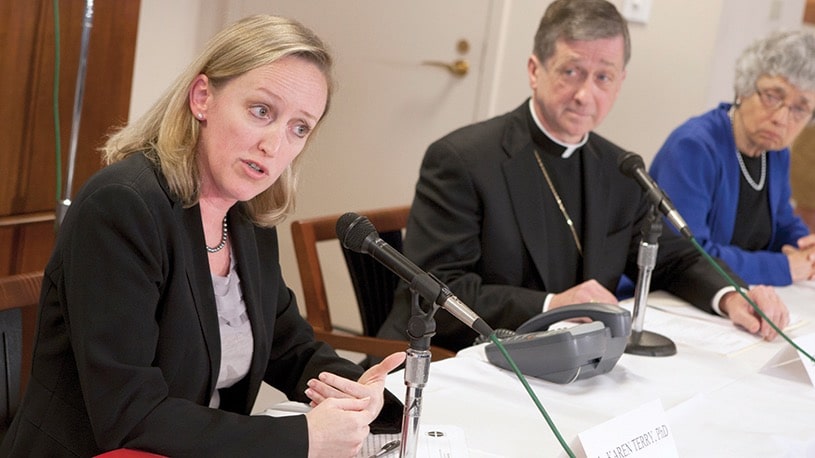
One key finding, as noted, is that the number of reported cases of sex abuse of minors by Catholic priests in the United States has been declining for the last 35 years (see sidebar). The causes and context study puts it like this: “The annual count of abuse incidents over this time period increased steadily from 1950 through the 1970s and then began to decline sharply at or about 1985, with the decline continuing through 2002.” Since 2002, the annual diocesan audits have found the dropoff to be contining.
What caused the rise in sex abuse in the first place? The John Jay College researchers don’t isolate a single cause but point to several factors at work. The overall picture to emerge is that deficiencies in the seminary program preparing men for the priesthood coincided with tensions and strains for priests in the context of a rapidly changing society where old standards of behavior were breaking down even as deviant behavior became more common and, in some instances, more socially acceptable. Significantly, too, the research found that priests who had suffered abuse as children were much more likely than other priests to become abusers themselves. The causes and context study definitively rejects the picture of abusers as “pedophile priests.” Most of these men, it says, “were not driven by particular pathologies, and most did not ‘specialize’ in abuse of particular types of victims.”
The study takes a controversial stand on the claim that the blame for the clergy sexual abuse crisis rests mainly with homosexual priests. Proponents of this view point out that, in 81 percent of the cases covered by the John Jay study, the victims were males — half of them between the ages of 11 and 14 and another 21 percent between the ages of 14 and 17. But the researchers counter that the data show homosexuals were “not significantly more likely to abuse minors than priests who identified as heterosexuals.” But how much more is “not significantly more”? This argument is likely to continue.
As for the dropoff in abuse since 1985, the researchers see it linked partly to the introduction into seminaries of “human formation” programs that better prepare men for life as celibate priests. Presumably, too, tougher standards for admission to seminaries and “zero tolerance” of abuse have both helped.
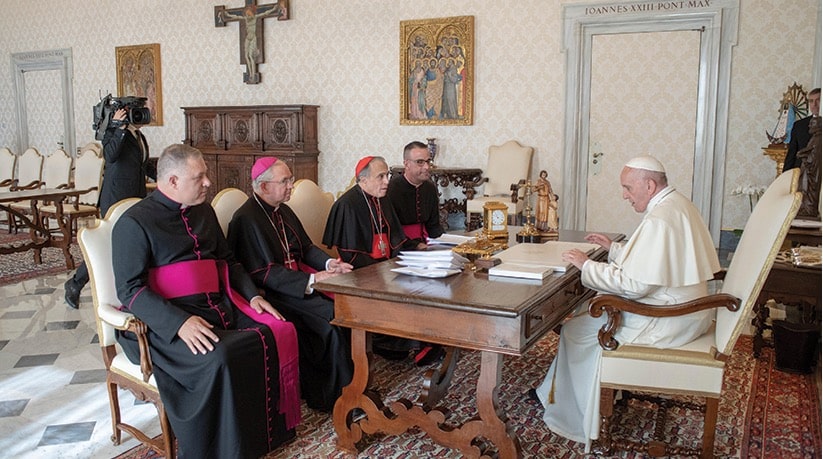
Transparency and penance
Recent discussions of this issue often cite two interacting factors — clericalism and secrecy — said to have exacerbated the abuse problem. In this view, clericalism was part of the reason why erring priests’ superiors often gave them new parish assignments after a brief course of therapy while keeping what had happened secret.
Bishops who did this were indeed acting in accordance with the standards of the clericalist system of their time. But they were serving the system, and in the end this system of concealment and illusion betrayed them and everyone else.
Pope Francis recently made the point that it’s unfair to judge Church leaders’ handling of old abuse cases by present-day standards rather than those of the past.
“The past should be interpreted using the hermeneutic of the age,” he told reporters on the return flight to Rome following his late-September visit to Baltic countries.
But past practice, however justified it may have looked in its day, ran afoul of a fundamental principle of public relations: When something bad happens, get the facts out quickly. Instead, Church leaders often hushed up abuse while hoping nobody would find out.
In the end, it didn’t work. The facts dribbled out over three decades, with each new revelation touching off a fresh burst of public anger and revulsion.
The John Jay study of causes and context notes the cost: “The Church has responded to the crisis, and as a result a substantial decrease in the number of sexual abuse cases has come about. … However, handling the crisis within the organization, with a lack of transparency to outsiders … led to cynicism about the Church’s response.”
At the start of Mass in one parish recently, with scandals filling the news and grief and anger filling Catholics’ hearts, the priest told the congregation why he wouldn’t be saying much about all that. Like his listeners, he explained, he too had a hard time understanding how something like this could have happened. Then he added:
“All I can say is I’m sorry — sorry to you, the People of God, who have been treated very shabbily by those from whom you had a right to expect better.”
Russell Shaw is an Our Sunday Visitor contributing editor.
| Recent Eruptions |
|---|
|
Last June the abuse issue flared up unexpectedly with the announcement by Cardinal Timothy M. Dolan that the New York archdiocese had investigated and found credible a charge that, 47 years earlier, retired Cardinal Theodore McCarrick, at the time a New York priest, molested an altar boy. 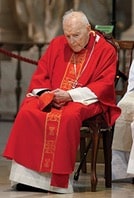 Two New Jersey dioceses then disclosed that they had paid settlements to adults whom McCarrick abused when he was a bishop there. Since then, it has been widely reported that in his New Jersey years, McCarrick often engaged in sexual harassment of seminarians and young priests. Pope Francis subsequently accepted his resignation as a cardinal and ordered him to spend time in seclusion, engaged in penance and prayer, pending a Church trial. When the U.S. bishops gather in general assembly in Baltimore this November, they are expected to approve a plan for a lay-led investigation of McCarrick’s career in the dioceses in which he served: New York; Metuchen and Newark in New Jersey; and Washington, D.C. The Vatican announced in early October that it had completed a preliminary investigation of McCarrick’s rise through the hierarchy and that Pope Francis had ordered a review of all files in the possession of the Holy See related to McCarrick. 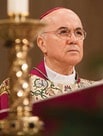 Adding fuel to this fire is a claim at the end of September by Archbishop Carlo Maria Viganò, former papal nuncio in the United States, that Francis lifted sanctions imposed on McCarrick by Pope Benedict XVI and then made use of his services as an emissary and trusted advisor. Cardinal Marc Ouellet, prefect of the Vatican’s Congregation for Bishops, has since asserted that, while McCarrick had been asked to limit his public appearances and travel, there were no canonical sanctions in place against him. Soon after the McCarrick story broke last summer, Catholics were rocked again by a Pennsylvania grand jury report saying 300 priests and other Church personnel had abused 1,000 victims in six dioceses in the state during the previous seven decades. The report featured graphic details of abuse, along with accounts of coverup by Church authorities. 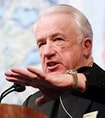 In September, Bishop Michael J. Bransfield of Wheeling-Charleston, West Virginia, stepped down in the face of allegations of sexually harassing adults. And in October, Cardinal Donald W. Wuerl, McCarrick’s successor in Washington, resigned in the face of complaints that he mishandled some abuse cases as bishop of Pittsburgh, where he served from 1988-2006.
|

